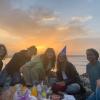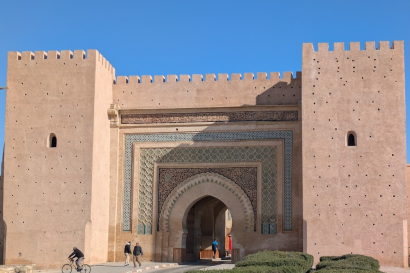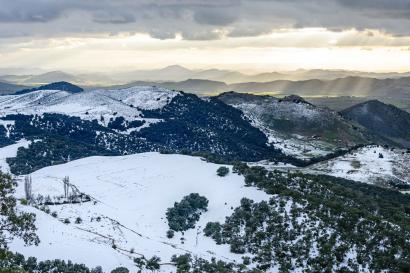Spring break. In the U.S., students flock to Florida, Miami, Daytona Beach, the richer ones opting to swim even further South to Puerto Rico and the Dominican Republic, where age is less a number and more an idea. Unfortunately, flights to the Caribbean don’t come cheap when you’re in Morocco, but thankfully, ferries to Spain do.
Crossing into the European Union was easy enough, just a bus to Tangier, a surprisingly quick ferry across the straight of Gibraltar, and another bus to Malaga. This portion of the travel was with IES Abroad, and once we arrived at the town in Spain an Islamic Art professor from IES Abroad Granada joined us to lead us on a whirlwind wander down the city streets, complete with a surprise interview by the BBC about Malaga’s influence on Picasso. We whisped around the Port of Malaga, taking in the boats and the faraway sounds of bands practicing for Semana Santa. The day was complete with a late dinner of fried anchovies and a hushing from a table of Spaniards tired of us American tourists. Fair.
Early the next morning we boarded a bus to Cordoba, where we started off in the old Jewish quarter, and saw one of only three remaining synagogues in Spain. The city was beautiful, and reminded me no small amount of the medinas common in Morocco. The Islamic influence was obvious in Andalusia, so much so that it felt more similar to Tangier than it did to Madrid, where my voyage would eventually take me. We finished our afternoon in Cordoba by visiting the Mosque-Cathedral, an ancient Islamic mosque that had been taken over by the Catholics post-inquisition. Stepping inside was like being transported to a different world, with grand arches and Islamic calligraphy mixed with romantic carvings and statues of Jesus, the building couldn’t decide which masters it wanted to abide. The clash was evident, somewhat heartbreaking, and strangely indicative of this region of the world.
The next day made way to Granada, a city that felt surprisingly quaint, despite its deafening history. Bright and early, we entered Al-Hambra, an Islamic palace and fortress later taken over by a Spanish king. The complex was sprawling, and every element was designed with care and beauty. Lush gardens plump with orange trees met brown stone carved into beautiful shapes and calligraphic letters, creating a sanctuary of calm and shade. The fortress bore over the side of the hill, monitoring Granada with a careful eye. I finished my afternoon wandering aimlessly through the streets, buying gelato and pomegranate juice, and ending with a heaping and almost overwhelming plateful of paella.
The next day, the IES Abroad crew found their way back to Morocco, and I found my way on a five-hour bus ride to Madrid. The city was gorgeous, crowded and thick and reminded me of so many cities I’d been to before. I went to the Prado, the Royal Palace, and El Retiro Park. I ate an inhuman amount of tapas. I wandered some more. I liked Madrid well enough, but Andalusia had left an imprint on me. The blend of the Islamic history, the beautiful architecture, the easy way of life, slow and meandering, left me feeling an inward peace, a gentle hush not out of annoyance of my loud American voice, but a gentle hand guiding me South.




Zoe Carver
Zoe Carver is a second-year student of International Affairs and Peace Studies at the George Washington University, minoring in French and Creative Writing. She is originally from Portland, Oregon and is apart of GW's Literary Magazine, Model UN team, and Student Climate Coalition. She just finished a positon interning in the United States Senate, and has a deep love for crocheting.











